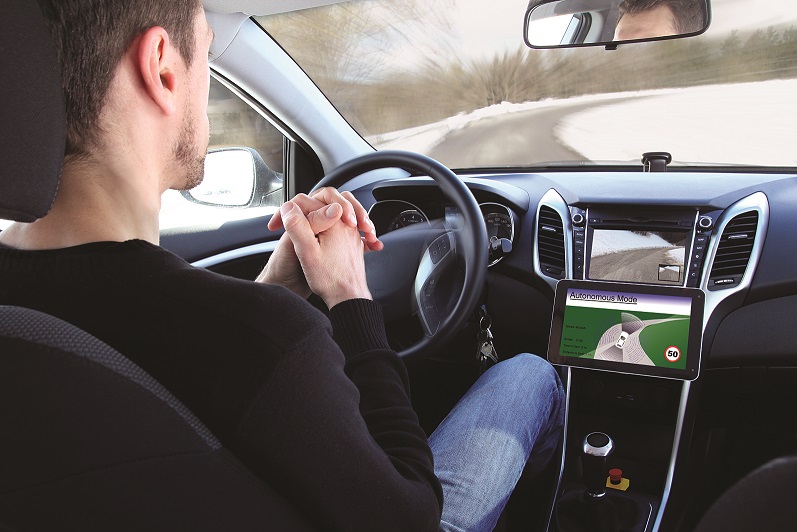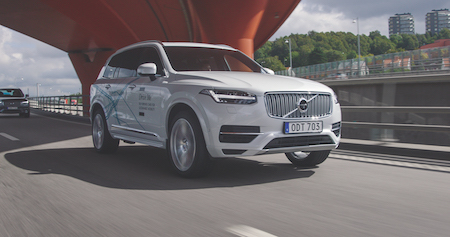The changing nature of where liability lies is perhaps one of the most significant issues surrounding the development of connected and autonomous vehicles. At the moment, in almost every jurisdiction, if a vehicle is involved in an accident the liability will lie with the driver if they can be shown to be negligent in some way.
The more autonomous the car, the less scope there is for negligence liability to be placed on the driver. The more autonomous the car, the less scope there is for negligence liability to be placed on the driver within existing legal frameworks. If the car is truly driverless then those sitting in it are (all things being equal) unlikely to be held liable for an accident and the liability is more likely to be an issue of product safety or efficacy such that it will, in many cases, shift to the manufacturer which is responsible for designing a safe product. Of course, if fully autonomous vehicles fulfil the promise of more controlled and safer driving then that shift in liability exposure could be seen as one which manufacturers will, in practice, be willing to accept and able to limit via reliable software and mechanical engineering. This may be the reasoning behind Volvo’s announcement that they will, in certain circumstances, take full liability for any accidents caused by their autonomous vehicles – although causation will no doubt remain an issue as long as some cars are driven by humans.
New responsibilities for manufacturers
Nonetheless, the stakes for manufacturers are potentially high. Failures in design or manufacture that result in road accidents, injuries or fatalities will carry serious reputational risk. The industry will not want perceptions to develop of a flawed technology which could lead to a stifling regulatory backlash. Also failures to undertake exhaustive testing or to address suspected issues could risk serious criminal action such as corporate manslaughter or homicide offences in some jurisdictions.
If liability is assumed to lie with the vehicle manufacturer, determining the exact nature of any accident and who is responsible will become very important for the manufacturer. That is why some form of event data recorders (black boxes) are likely to be standard in autonomous vehicles which, in most cases, should be able to demonstrate the cause of any incident. This can be seen as merely an extension of the increasing use (and indeed encouragement by insurers) of the use of “dashcams”.
However, the deployment of event data recorders raises concerns around the use and recording of what may be considered “personal data”. This will raise concerns around a culture of surveillance societies and may conflict with the requirements of data privacy laws in some jurisdictions, particularly if there is any real-time or manufacturer triggered downloading of data not involving a defined law enforcement information gathering process. There will also be questions of whether third parties, such as a vehicle not involved in the accident or an infrastructure provider, would be obliged to provide data which might have a bearing on what happened.
Manufacturers will also need to be clear about maintenance and servicing requirements as well as ways to limit their liability, for example, in ensuring that they have given effective instructions to users so that they can operate their vehicles safely. Products which do not have adequate explanatory guidance are normally regarded as unsafe under existing laws in some jurisdictions. As a result, this may even require specific operator training unless the operation of the vehicle can be made failsafe. however, the level of digital embedding in new vehicles may enable training to be delivered via video “walk throughs” and even driver comprehension testing.
An increasingly complex set of liabilities
The further challenge is that even though the shift in liability is initially to the manufacturer, the number of players involved in creating connected and autonomous cars means that liability could affect many organisations. These could range from suppliers, software providers, software developers, and telecoms service providers, so liability will get passed through the supply chain and each of those companies will need to be aware of their potential exposure to liability claims.
In terms of the specific question of product liability, it is likely that the overall legislative approach will be the same as now. The challenge lies in the potential for this legislation to be deployed on a much larger scale and the risk that manufacturers may need to manage more frequent product recalls because defects have been identified that could cause accidents.
As a result manufacturers will need to be very clear about their mandatory product liability obligations towards end users and ensure they have the operating procedures, risk management and contractual arrangements with suppliers to manage these obligations effectively. They should also explore ways to limit liability through their agreements with automotive customers.
Managing liability
However, in the UK there are also implications relating to obligations under consumer protection legislation which places strict requirements on manufacturers to ensure that a product is safe. in a connected world where car manufacturers have more direct and on-going contact with customers they will need to ensure they are equipped to address these stricter requirements.
It will not just be manufacturers who will have to review their approach to managing liability issues. Employers will need to ensure compliance with health and safety legislation where the vehicles are being used by employees. That means ensuring that the appropriate vehicles are provided and that the training is suitable and complies with existing policies regarding safe use.
More work still needed to clarify the rules
It is clear that there are many gaps in current liability rules in relation to connected and autonomous vehicles and there will need to be more thinking about these regulations. for example, it is accepted that software can have bugs in it and that the supplier is not necessarily liable for any subsequent problems caused by the bug. however, in an autonomous vehicle where the stakes are higher, that approach may not be acceptable. furthermore, the possibility for data collection direct from vehicles during testing and once on the market will make the scope for latitude due to “undiscoverable” software faults limited. indeed, in the Eu and under English law, the tendency is to hold manufacturers of products (even with embedded software) strictly liable if they prove to be unsafe or unsatisfactory.
Indeed, the liability of software developers is a particular challenge not least in the way they are being drawn into profound ethical questions about how they programme vehicles to deal with the dilemmas that have, until now, been the stuff of philosophers’ thought experiments. for example, if the vehicle has to decide who to crash into when an accident is about to happen, should it be programmed to swerve into the path of whoever can best survive the collision, so the cyclist wearing the helmet rather than the baby in the pram? should it be programmed to put the life of the occupant at risk rather than the passer-by?
At the moment, there is no clear legal guidance for programmers on how to design crash algorithms. This raises the question of whether there would be any criminal law responsibility on the programmer in these scenarios. some companies have drafted in philosophy professors to address these dilemmas but we may well end up with a view that the choices are so difficult to resolve that programmes will be designed to make a random choice in these “no win” situations.
These issues do not only arise if all cars are fully autonomous. in the more likely scenario of a mixed system with some autonomous and non-autonomous vehicles being driven, the picture will be even more complicated. should the driver still have responsibility even if the car is in autonomous mode? should they be obliged to deploy a manual override in the event of an emergency and would they be deemed negligent if they did not react quickly enough? many of the civil liability problems will simply be whitewashed by insurance, but there may for a time be litigation between the insurers of “drivers” and manufacturers to determine respective responsibilities.
If autonomous vehicles are to be attractive to end customers it will be vital to develop sensible and practical ways to deal with these liability issues. This will include the development of a sensible legal framework which will apportion financial responsibility without creating rafts of distracting litigation. Large countries and groups of countries (like the Eu) have an opportunity to lead the development of a rational framework which could act as a model more widely and facilitate uptake and trade. manufacturers need to start leading the debate in these areas as well as ensuring that they are fully aware of the implications of current legislation and how it applies to their emerging technology.


.jpg)
.jpg)
.jpg)

.jpg)




